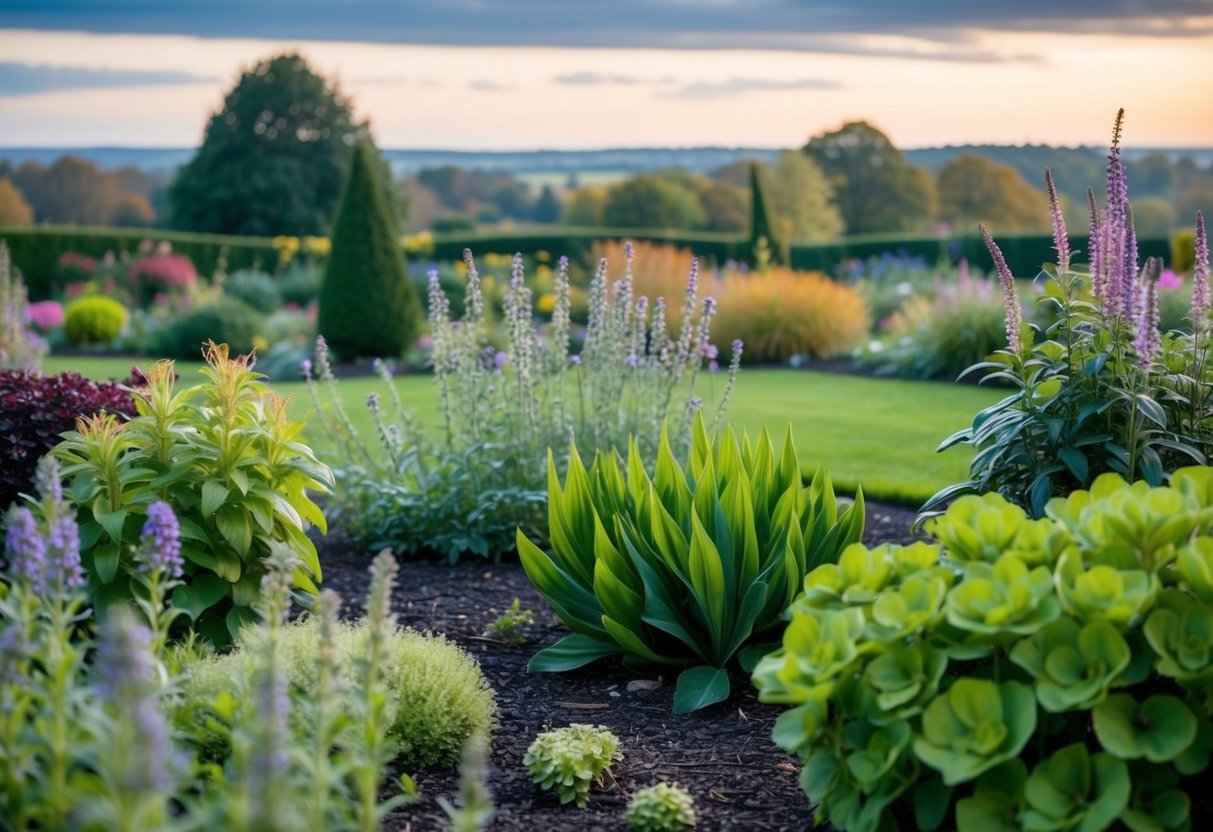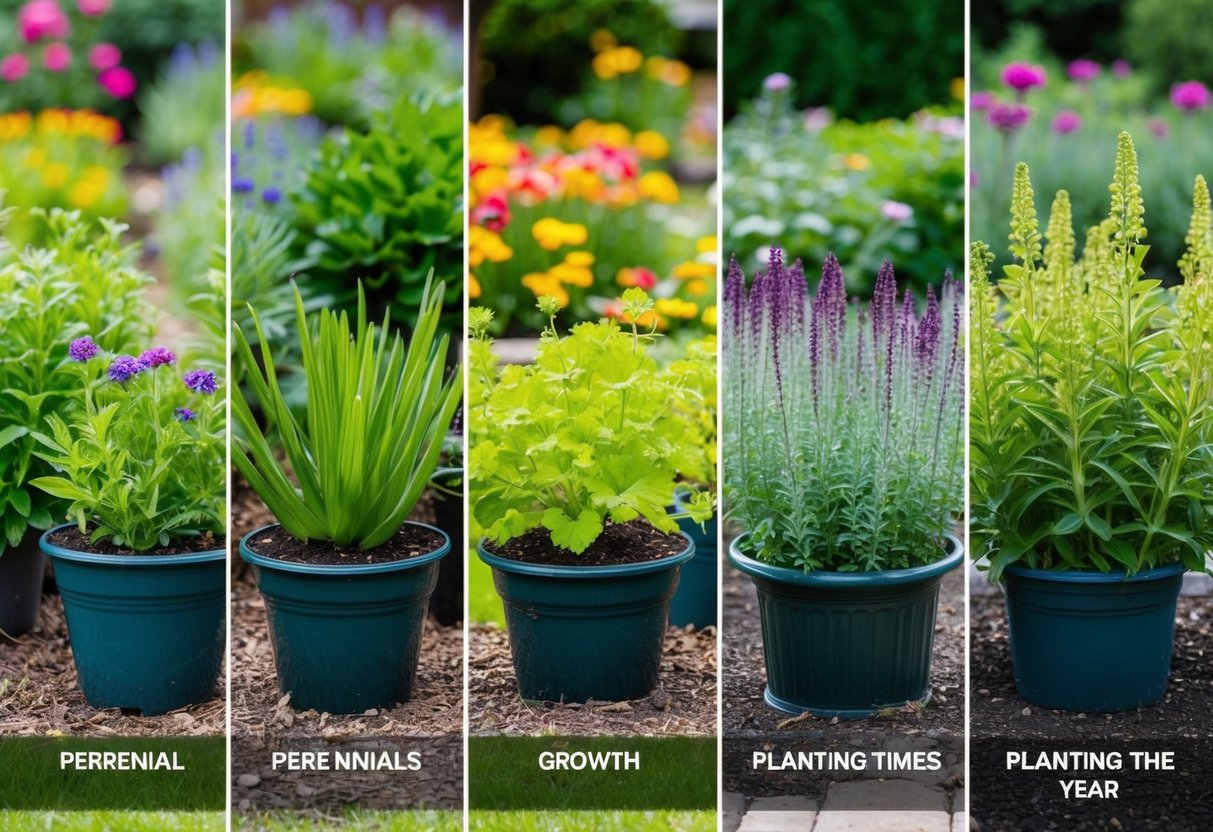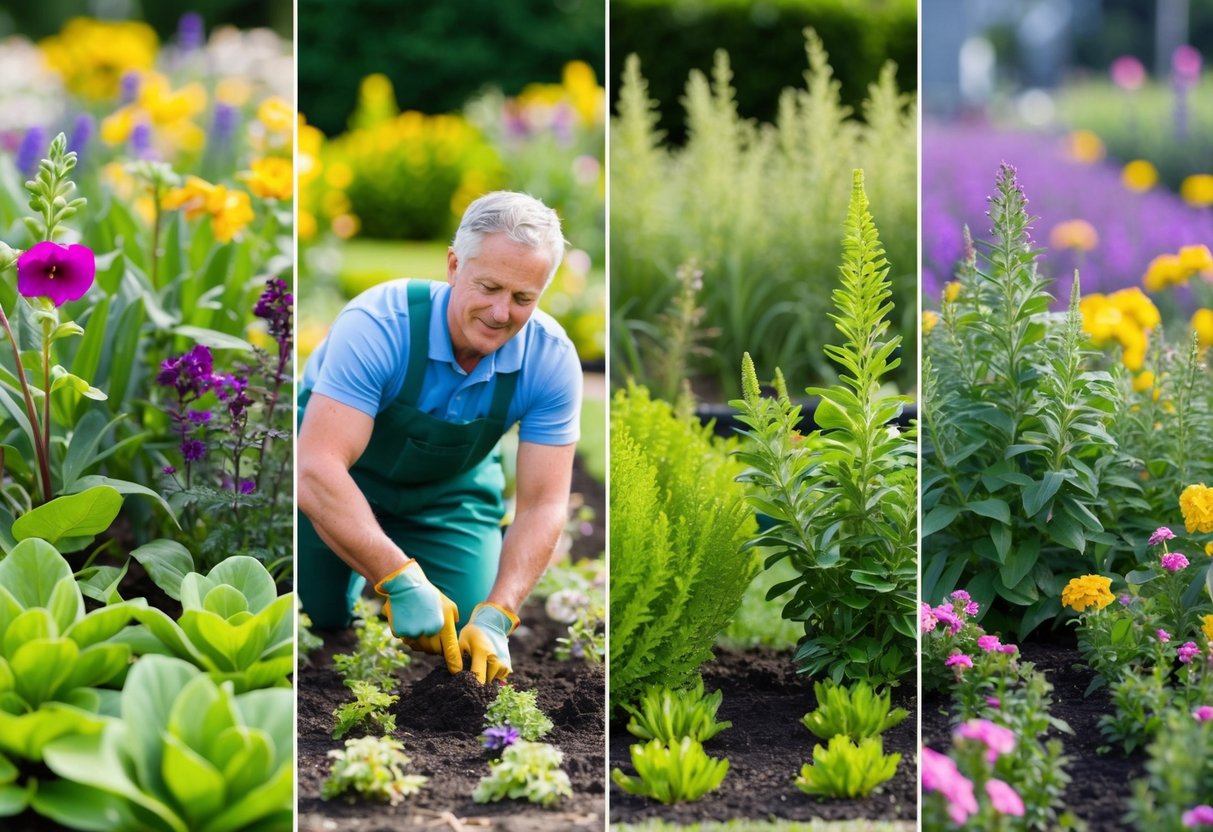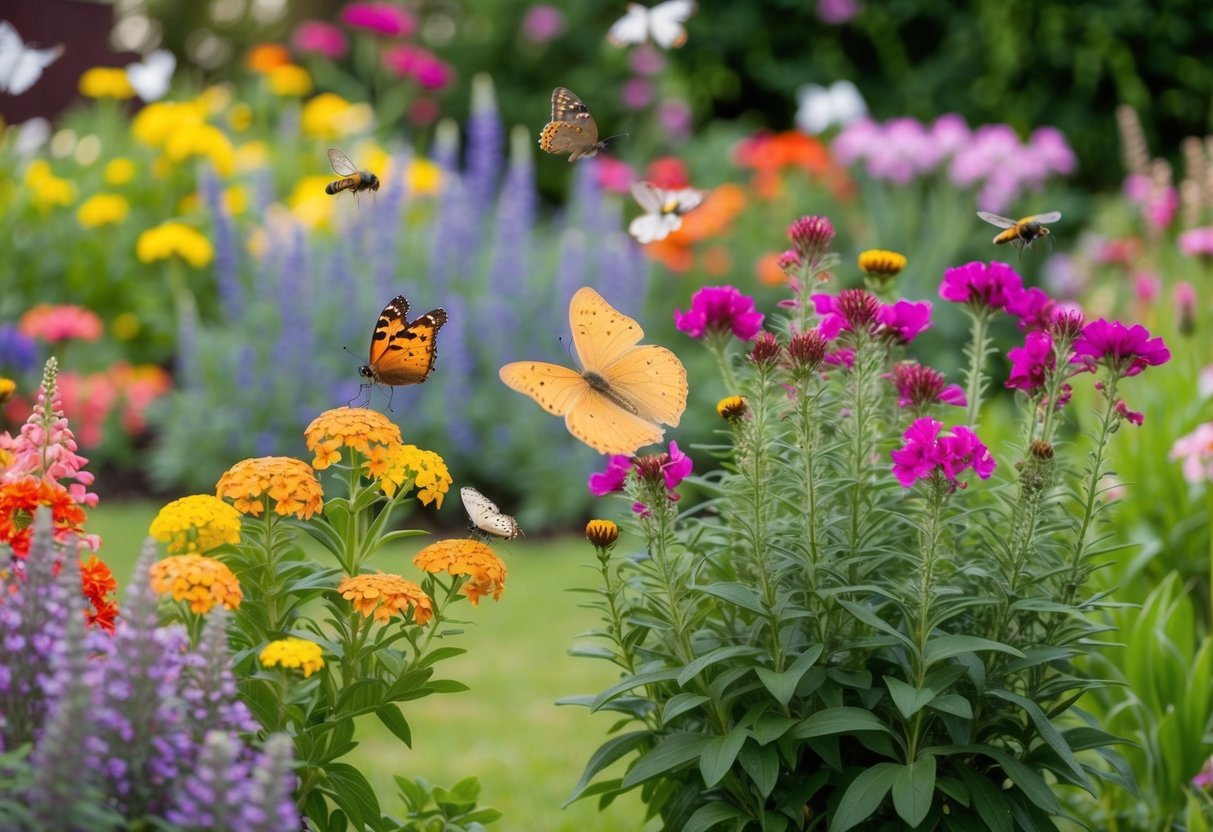Can You Plant Perennials All Year Round? Tips for Success
Thinking about adding some color to your garden all year long? Perennials might be just what you need. They can offer continuous blooms and interest in your landscape. Yes, you can plant perennials year-round, depending on your climate. In regions with mild climates, certain perennials can be planted even in the winter.

Imagine enjoying vibrant flowers like tulips and crown of thorns through every season. Whether you want blooming perennials in spring or sturdy green foliage in winter, choosing the right plants for your area is key. This ensures your garden remains lush and beautiful no matter the season.
By selecting perennials like bergenia, you can enjoy a diverse garden throughout the year. With the right combination, your landscape will thrive and bring joy to your outdoor space. Dive into the world of perennials and discover how to keep your garden flourishing all year round.
Understanding Perennials and Planting Times

Perennials are plants that come back year after year, offering both beauty and reliability in your garden. By knowing the best planting times, you can enjoy a thriving garden filled with favorites like garden phlox and echinacea.
Defining Perennials
Perennials are plants that live for more than two years, unlike annuals, which complete their lifecycle in a single year. These plants usually bloom each spring, die back in the winter, and regrow from the same roots. Perennials come in many types, from flowering plants like salvia to foliage types. Growing perennials involves choosing the right spot in your garden where conditions like sunlight and soil meet their needs. This gives them the strength to return each season.
Best Seasons for Planting Perennials
The best times to plant perennials are usually spring and fall. In spring, you get mild weather and moist soil, giving plants like garden phlox time to establish roots. The ground is warming up, and rain is more common, which helps new plantings. Fall, about 6-8 weeks before the first frost, is also great for planting. This timing lets perennials settle into their new home and build strong roots before winter arrives. Both seasons offer unique benefits, encouraging healthy plant growth and vibrant blooms.
Considerations for Year-Round Planting
While spring and fall are ideal, you can plant perennials almost any time, as long as you accommodate their needs. In summer, make sure to provide enough water and shade during the hottest parts of the day. Winter planting is trickier because cold temperatures can hinder growth. If you plant in winter, focus on root protection and choose hardy perennials like echinacea. When planning year-round planting, consider the unique requirements of each perennial species in your garden. This way, you can enjoy your favorite plants throughout the year while maintaining their health. Whether it’s echinacea or salvia, understanding their seasonal requirements results in a thriving garden.
Preparing the Garden for Perennials

Preparing your garden for perennials can enhance their growth and longevity. Focus on the soil conditions and selecting the right plants for your climate to ensure vibrant blooms.
Soil Preparation and Requirements
Start by checking if your garden soil is well-drained. Good drainage prevents water from pooling, which can cause root rot in perennials. Test your soil by digging a small hole and filling it with water to see how quickly it drains. If it takes too long, consider amending with sand or small gravel.
Organic matter enriches the soil with essential nutrients. Add compost or aged manure to improve soil structure and nutrient levels. Mixing in organic matter helps retain soil moisture while enhancing drainage. Ensure you maintain a balance between moisture and drainage for optimal plant health.
Soil pH is another important factor. Most perennials thrive in a neutral to slightly acidic pH range. You can purchase a soil testing kit to measure this and amend the soil accordingly. Lime can increase pH, while sulfur can decrease it. Regular soil testing helps maintain the ideal conditions for your perennials.
Choosing the Right Perennials for Your Climate
Choose perennials that match your local climate. Understanding local microclimates helps in selecting the right plants. These can be spots in your garden that get more full sun or are shaded by structures.
Prioritize plants well-suited to your area’s natural conditions. For sunny gardens, choose sun-loving perennials like lavender or coreopsis. In shady areas, hostas or ferns can thrive.
Check the hardiness zone for your region, which indicates the lowest temperatures plants can withstand. Match your plant choices to this zone to ensure they survive the cold winter months. This information is usually available on the plant’s label or online resources.
Maintaining Perennial Plants

Caring for perennials involves consistent watering, effective deadheading, proper fertilizing, and adapting your approach with the changing seasons. These practices ensure your garden remains vibrant and healthy year-round.
Watering and Moisture Management
Perennials require specific moisture levels to thrive. Generally, these plants need about an inch of water weekly. Consistency is key. Make sure the soil is moist but not soggy, as excessive water can damage the roots.
Use a mulch layer to retain moisture, which is especially useful during hot months. Pay attention to plants growing in sunny areas, as they might need more frequent watering. To check soil moisture, stick your finger about an inch into the soil. If it’s dry, it’s time to water.
The Role of Deadheading in Perennial Care
Deadheading is the process of removing spent flowers. This practice keeps your perennials looking neat and encourages more blooms. By cutting off faded flowers, you redirect the plant’s energy from seed production to growth and new flowering.
Use clean, sharp scissors or pruning shears for this task. Focus on flowering perennials like coneflowers and black-eyed Susans, which respond well to deadheading. Always trim at a point just above a leaf or bud to promote new growth.
Fertilizing for Optimal Growth
Fertilizer plays a crucial role in maintaining the health and vigor of perennials. Typically, a balanced fertilizer with equal parts nitrogen, phosphorus, and potassium works well. Consider applying it in early spring to kick-start growth.
For best results, follow package instructions regarding the amount and frequency. Over-fertilizing can harm the plant and the environment. Organic fertilizers, such as compost or well-rotted manure, can also be beneficial. They improve soil structure while providing nutrients.
Seasonal Perennial Care
Adapting your care routine to the seasons is essential for keeping perennials healthy. In spring, clean up last year’s growth and apply a layer of mulch. As summer approaches, focus on consistent watering and watch for pests.
In the fall, consider dividing perennials that are getting too large. This will promote better growth in the coming year. Overwintering plants may require a thicker mulch layer to protect the roots from cold temperatures. Prune any remaining dead foliage to keep the garden tidy.
Designing a Perennial Garden

Choosing the right plants and designs can make your garden colorful and lively all year round. Focus on incorporating vibrant colors and textures, and layering plants to ensure a continuous display of blooms.
Incorporating Color and Texture with Perennials
Using a variety of perennial flowers can fill your garden with vibrant colors. Consider planting flowers like asters and phlox to create beautiful pops of color. Coneflowers and rudbeckia are also great for adding bright and cheerful hues.
Mixing textures brings more interest to the space. For example, sedum and yarrow provide lovely contrast. Meanwhile, the unique foliage of plants like clematis and foxglove adds depth. Combining these plants makes your garden visually exciting throughout the seasons.
Use contrasting colors and textures to create dynamic garden color. Black-eyed Susan can be paired with salvia for a striking look. Additionally, planting bougainvillea adds a tropical flair. By varying the height and shape of these plants, you bring variety to your garden layout.
Layering for Continuous Blooms
Creating layers in your garden ensures a longer blooming season. Start with taller plants at the back, like foxglove and clematis, which offer height and dramatic flowers. In front, place mid-height blooms like salvia and coneflowers to add dense color.
Yarrow and sedum, with their low-growing nature, work well at the front. This method gives a sense of depth and richness. It also allows each plant to shine without overcrowding.
Continuous blooms are achievable by choosing plants that flower at different times. For example, rudbeckia might bloom in late summer while asters thrive in early fall. By planning ahead with these layers, you keep your garden vibrant and interesting for as long as possible.
Attracting Wildlife with Perennials

Planting perennials can make your garden not only beautiful but also a haven for various wildlife. You can attract a variety of pollinators and support local ecosystems by choosing the right plants.
Perennials That Attract Pollinators
Pollinators such as bees and butterflies love colorful and fragrant flowers. Shasta daisies with their bright white petals are an excellent choice. These flowers are not only cheerful but also attract a variety of beneficial insects. Butterfly bushes are another great option. Their fragrant blossoms are a magnet for many pollinators.
Baptisia is a plant that blooms with stunning flowers, drawing in bees and butterflies. Its tall, colorful spikes add height and interest to your garden while supporting these important insects. By planting these perennials, you’re helping to provide vital food sources for pollinators.
Supporting Ecosystems with Native Plants
Native plants play a critical role in sustaining local wildlife. They are well-adapted to the local environment, requiring less water and maintenance, which helps create a more sustainable garden.
For example, milkweed is native to North America and supports pollinating insects like the monarch butterfly.
Adding native plants such as Shasta daisies and baptisia can create a vibrant ecosystem. These plants not only offer nectar for pollinators but also provide habitats for birds and other small creatures.
By incorporating native perennials into your garden, you promote biodiversity and make a positive impact on the environment.
Consider planting a mix of these perennials to create a diverse and wildlife-friendly space. The effort you put into selecting and caring for these plants pays off as your garden becomes a bustling hub of activity, supporting a wide array of wildlife.







